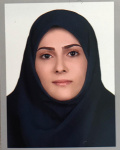| Authors | Nafiseh Sharifi, Nahid Ghazyani and Nima Taghavinia |
|---|---|
| Journal | Physical Status Solidi (a): applications and materials |
| Paper Type | Full Paper |
| Published At | 2015 |
| Journal Grade | ISI |
| Journal Type | Typographic |
| Journal Country | Iran, Islamic Republic Of |
Abstract
Conventionally, a film of TiO2 particles of 300 nm size is employed in Dye-sensitized solar cells (DSCs) as the back reflector film to enhance the light harvesting. Perfect reflectance of silver in visible and near infrared motivates to investigate its potential as the material for the light back reflector film in DSCs. In this study, light back reflector films consisting of 300 nm-sized silver particles, as well as vacuum evaporated silver flat film, were fabricated and compared to 300 nm-sized rutile-type TiO2 particulate reflector film to study their optical aspects. Conventional TiO2 rutile-type particulate film demonstrates slightly lower performance compared to silver flat films. It is also found that for silver, the morphology is critically important. Iodide-based and cobalt-based electrolytes with different transparencies in the visible range were used to compare the effect of electrolyte transparency on light back reflection. In cobalt-based cell, 26%, 21%, and 13% enhancement in photocurrent is observed when the cells are modified with silver flat film, TiO2 particulate, and silver particulate films, respectively in which external quantum efficiency measurement confirms this trend. In addition, optical calculations demonstrate that in the range of 400–500 nm, absorption loss is 40% and 30% for iodide-based and cobalt-based electrolytes, respectively.
